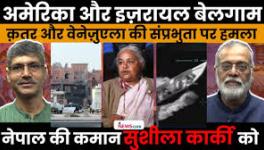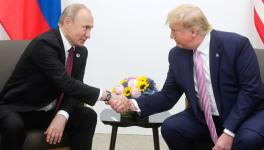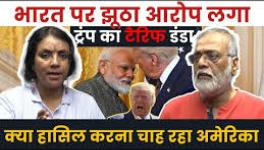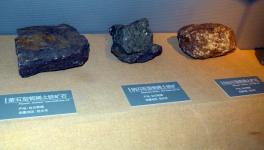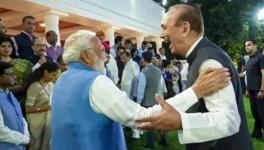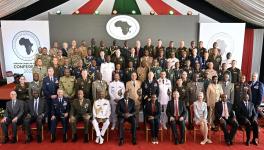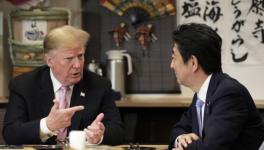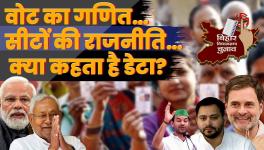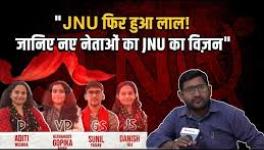Obama Visit: New Dance Moves, Little Substance
The Obama visit has completely wowed the Indian media. 24 hour TV channels have spent at last 12 hours on the Obama visit – the other 12 hours of course going for ads, the reason why TV channels exist in the first place. Nothing has been left out – from dance moves to his and Michelle's good looks. When we tot up the positives and not the 10-12 billion dollar deals India signed that will produce 50,000 jobs in the US, there seem to be very little for India bar the atmospherics.
Let us take the one item that has driven the media and the foreign policy experts into ecstasy – the US support for a permanent Security Council seat. Here President Obama was very careful in his choice of words. He said in his address to the Parliament, “Indeed, the just and sustainable international order that America seeks includes a United Nations that is efficient, effective, credible and legitimate. That is why I can say today—in the years ahead, I look forward to a reformed U.N. Security Council that includes India as a permanent member.” No mention that the US will back India for a permanent membership of the Security Council, just that the US looks forward to a reformed UN Security Council that will have India as a permanent member. Incidentally, this is roughly what William Burns had said in a press conference before Obama's visit, “Given India’s rise and its significance, we believe that India will be a central part of any consideration of a reformed Security Council.” This was widely seen by the same media as a negative on India's Security Council ambitions. With slight retooling of the words, the same is now cause for euphoria!
However, if this sounds churlish, let us grant what the Indian media is reading into his speech -- that this is indeed the US supporting India's claim for a permanent security council seat. Hence the question, how long will it take to reform the US Security Council to which Obama has linked India's permanent membership? Or what is it that we will have to do in return?
The reality is that UN Reforms are nowhere on the horizon. Even if they do come in the next decade or so, the reforms that the US is backing imply that permanent members will be expanded but without the veto that the P5 currently enjoy. This means a three-tier UN Security Council, with only the P5 holding veto powers. Others, India, Brazil, South Africa, Japan and Germany are the names doing the rounds will be permanent members but without the veto; and then as the third tier, elected temporary members with their current 2 year term.
On the other question, what India will have to do in return, the answer is already contained in the Joint Statement. One of the not-so-hidden conditions for the US support for a permanent seat in the Security Council is that India play ball with the US on Iran in its current 2 year term. The Indian side seems already to have signed on to the Iran sanctions quite enthusiastically. The Joint Statement states, “Both leaders underscored that all states have an obligation to comply with and implement UN Security Council Resolutions, including UN sanctions regimes.” On sanctions against Iran, India had been quite lukewarm earlier and had agreed that Iran has a right to the fuel cycle under the Nuclear Non-Proliferation Treaty. The Iran issue is the key test for India's independent foreign policy. Already, Brazil and Turkey have shown that they believe that direct engagement with Iran would be far more fruitful than the sanctions regime that the US is pressing on the world. Here, India seems to have now signed on to the US agenda. This will also mean India giving up access to cheaper Iranian gas and oil.
The other key point for India in his visit is the assurance on high technology. The US said a number of times that it will remove three entities – DRDO, ISRO and Bharat Dynamics Ltd (a public sector entity created for space and missiles). The entity that still remains under ban is of course the Atomic Energy Commission and all the entities under it.
India was not talking about a removal of ban on these 4 Indian entities but access to what are known as “dual use” technologies. This is what Manmohan Singh had assured the Indian Parliament that India was getting with the India US nuclear deal. On this matter, there is this vague statement in Obama's speech: “And we’ll work to reform our controls on exports.” Dual use technology is unlikely to be on offer, this vague promise notwithstanding. This is where the Indian side kept remarkably quiet, pretending that removal from the entities list is the same as access to dual use technology, which is barred under the current controls on exports. Again, on this issue, the Indian media was remarkably co-operative. It did not ask what exactly the US was offering. It was quite happy to peddle the belief that this is what India was really asking all along.
The nature of the strategic partnership was also elaborated in the joint statement of the two leaders. It talked about how “The transformation in India-U.S. defense cooperation in recent years has strengthened mutual understanding on regional peace and stability” (emphasis added). Clearly, the US sees only a regional role for India in this strategic partnership. The statement also gave a pat on the back to India for agreeing to buy what experts claim is at least $5 billion of military hardware with more to follow. This is on top of $4 billion arms India has already purchased from the US in the last two years.
The offer to make India a member of the NSG, and other technology restriction regimes is a double-edged weapon. While it allows India a voice in this scheme of technology denials to certain countries, it will also force India to accept what others want. The only area that India has an interest in is membership of the NSG. Here India had already agreed to abide by the NSG decisions but without a voice in the discussions. In all others – Missile Technology Control regime, Wassanaar arrangement, Australia regime – India gains very little. These technology control regimes are the descendants of the Cocom regime aimed originally at the socialist block and then converted to be used against countries that were out of favour with the US. The US draws up the list for all these and all others follow the lists – this is how these technology control regimes work today. It is far more in US interests that India becomes a party to these regimes.
If we look at what India has gained, it appears to be only on two issues – a statement that Obama is looking forward to UN Security Council giving India a seat and the other removing three Indian companies from the banned entities list, while promising to review the export controls regime for India. Very long on atmospherics but quite short on what was committed.
What did the US gain out of the Obama visit? Well, to be fair to Obama, he made no bones about why he was coming to India. He said upfront that he was coming to India to prise open the Indian market. The gamut of agreements signed or promised run to 10-12 billion dollars -- 5 billion of military hardware and 7 billion dollars for other contracts. That, according to Obama, translates to 50,000 US jobs. On agriculture, the US support for corporate dominance over India's agriculture was visible in his speech and in the Joint Statement – from seeds (read Monsanto) to the supply chain cycle (read Wal Mart). The Seed Bill before the Parliament contains various provisions that are in favour of MNCs such as Monsanto and against the interest of the farmers. On Iran, India has more or less agreed to toe the US line.
While Obama “chided” India on Burma, India was content to keep quiet on Israel's brutal siege of Gaza and the illegal occupation of Palestine. Neither did the talk about nuclear weapons and disarmament in the Joint Statement percolate to a mention of Israel's nuclear arsenal.
On the nuclear issue, the Joint Statement talked about India ratifying the Convention on Supplementary Compensation (CSC) and a “level playing field” for US companies. What the US really means is that since the nuclear suppliers from Russia and France are state-owned, they do not need a guarantee against liability, but US companies do. A level playing field therefore means no liability for the US suppliers. This is what they are trying to achieve through CSC, which exempts suppliers from liability. While in India, the Indian law will hold, it is uncertain what would happen if such cases go to international arbitration. Here, India's signing up with CSC could very well mean Indian claims being disallowed in international fora. India has not done itself any favour in rushing into sign the CSC to please Obama.
Apart from what was mentioned, equally important was what was not mentioned. As good hosts, India seem to have forgotten about asking the US side on David Headley and the US side not sharing even after the Mumbai attack the information it had on Headley. Neither were hard questions asked on US commitments on cutting CO2 emissions. Instead, the US side got away with general warm and fuzzy statements on steps to be taken on climate change without specifying what the US was proposing to do on meeting the Kyoto protocol requirements let alone the need for a sharper cut in emissions for the next commitment period. This sharpens the suspicion that the Copenhagen Accord was a get-out-of-jail card for the US in the Copenhagen Summit.
Americans seem to have figured out the Indian psyche. Give Indians an ego boost, tell them how important they are and they will forget the hard reality. Obama's speech was indeed a virtuoso performance – it hit the right notes, stroked the right egos. What he delivered concretely remains unclear. After the dust settles and the atmospherics disappear, the hard reality will hit -- that he has carried back a number of goodies for the US while handing over a few coloured trinkets to the Indians.
Get the latest reports & analysis with people's perspective on Protests, movements & deep analytical videos, discussions of the current affairs in your Telegram app. Subscribe to NewsClick's Telegram channel & get Real-Time updates on stories, as they get published on our website.











